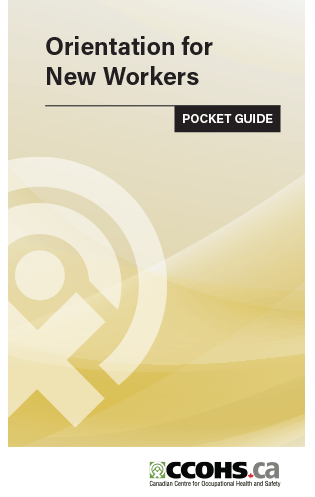Scheduled maintenance - Thursday, July 12 at 5:00 PM EDT
We expect this update to take about an hour. Access to this website will be unavailable during this time.
Train new workers on their health and safety rights and responsibilities

Designed for both young and new workers, this guide will provide new workers with an overview of their health and safety rights and responsibilities, hazard recognition, hazard control, preparing for emergencies, occupational health and safety programs and who to contact for additional help.
It is designed to be both a guide for new workers, as well as a tool that employers can use as part of their workplace-specific orientation training program. This 184-page guide is filled with clear-language text including safety tips, charts, diagrams, checklists and illustrations.
Objectives
This is a guide for new workers plus a tool that employers can use as part of their workplace-specific training program. Orientation for New Workers will provide both workers and employers with an overview of:
Scope
New workers will learn about potential hazards that they may encounter in the workplace and how they can help protect themselves and co-workers. The guide offers examples and practice scenarios. While this guide is meant to be used by all workers, not all situations discussed will apply to all workers or workplaces. During job-specific training, employers should highlight which parts of the guide apply.
Target Audience
This guide is written for new employees. The term new implies several groups, including
Each publication produced by CCOHS undergoes several stages of review. As part of this review, representatives from government, employers, and labour are requested to comment on draft copies of CCOHS documents for technical accuracy and readability.
Although every effort is made to ensure accuracy and completeness of the information, it is understood that CCOHS makes no warranty as to the accuracy or completeness of such information and assumes no liability for any damages or loss suffered as a result of any inaccuracy or incompleteness therein.
CCOHS publications are unique in that they are developed by subject specialists in the field, and reviewed by representatives from labour, employers and government to ensure the content and approach are unbiased and credible.
Although our publications are protected by copyright, permission for non-commercial reproduction may be provided.
Please use our Copyright Authorization Form to request permission, or contact us for more information.